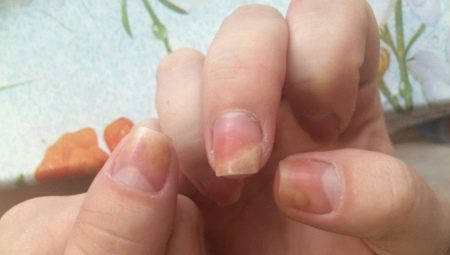In the pursuit of beauty, women often acquire unpleasant diseases that are directly related to the methods that were used to restore beauty. One of the fairly common problems in women who often build up nails or apply gel polish is onycholysis.
About ailment
Onycholysis is a lesion of the nail plate associated with its distal exfoliation. Pathology can also develop on a single finger, or it can affect several nails at once on both hands and feet. In rare cases, all nails peel off. In most cases, this happens due to traumatic effects on the plate (shock, bruise, pinching). Everyone knows that a pinched nail “goes away” over time. This is the traumatic onycholysis. In a third of cases, fungi are responsible for the detachment of the nail plate. A significant proportion of all cases occur precisely in women who use rather aggressive means to care for their nails.
Onycholysis is not contagious unless it is fungal. By and large, it does not interfere with life, and delivers only aesthetic visual inconvenience: the affected nail plates do not look the most attractive way.
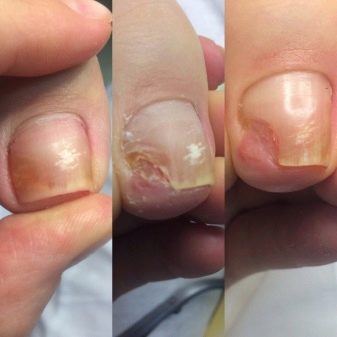
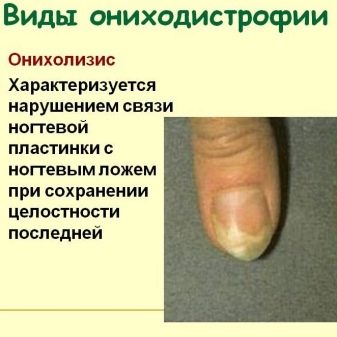
Causes
The cause of onycholysis can be not only the use of gel polish. Often the problem is indicated with trauma, mycosis and allergies.
- If the nail plate was injured, then the process is quite deep, the hematoma under the nail compresses the blood vessels, the nutrition of the nail is getting worse. There is a change in its color and structure, the plate is deformed. From the edge, which was more mobile, delamination occurs. The wider the area of detachment, the more likely the addition of a bacterial infection and the accompanying inflammatory process.Completely the nail plate rarely exfoliates.
- Infectious damage to the nail plate It may well happen during the processing of nails for manicure, and with infection by fungi. In this case, the blood supply to the plate is disturbed, its structure changes, often the plate leaves the bed completely. After treatment, a full growth of a normal new nail plate is possible.
- Allergic Onycholysis can develop as a body reaction to some types of nail polish, for example, gel polish, if a woman often uses it. If a woman does not give her “rest” nails, then their water-salt and vitamin balance is not replenished. It is possible that a long stay of the nail plate under a layer of gel polish can lead to deformation and the onset of any form of onycholysis.
- In addition, the development of pathology is not excluded against the background of endocrine disorders, diseases of the gastrointestinal tract, as well as frequent UV irradiation of nails.
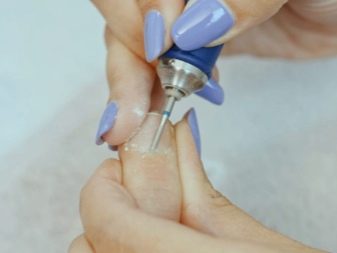
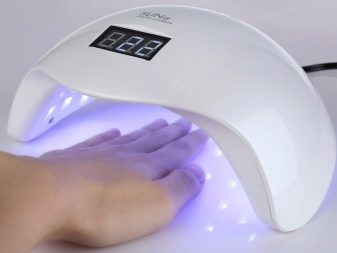
How is it manifested?
Confusing onycholysis with something else is quite problematic: the symptoms of this pathology are too characteristic. The nail plate begins to separate from the free edge. The color of the nail changes from healthy to grayish, since a certain amount of air enters the stratified space. If pathogenic bacteria get into the space under the nail at this stage, the plate will become yellowish, the fungi give it a brown color, the Pseudomonas aeruginosa - green. The plate becomes uneven, begins to deform. An unpleasant odor from the nail may appear.
Treatment
A dermatologist is involved in the treatment of pathology. This specialist in one appearance and the result of the analysis on the microflora can establish why this happened and offer the optimal treatment regimen. The approach to treatment is always carried out comprehensively. First, the cause of the onycholysis is eliminated. If these are diseases, then they should be treated. If it is a matter of frequent manicure, the nails should be given rest and for some time not to be painted and not exposed to UV radiation.
A woman is shown taking multivitamins and topical application of vitamin preparations on nail plates. Calcium and iron preparations are especially useful.

The exfoliated part with a partial lesion should be regularly trimmed and treated with antiseptics. It is advisable to protect the injured nail plate with a bactericidal patch. With a large area of detachment, surgical treatment associated with the removal of the nail plate and cleaning the bed will be used. After this, a sterile dressing is applied.
For the treatment of bacterial and fungal infections, aniline dyes, alcohol solutions, as well as antifungal drugs can be used.
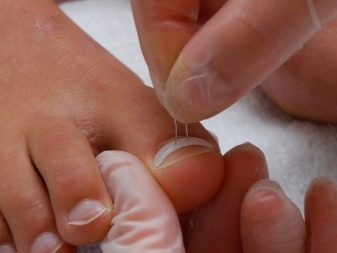
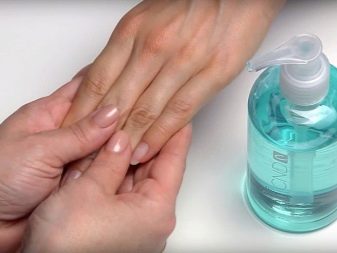
Throughout the entire course of treatment, a woman is prohibited from contacting a damaged nail plate with water, manicure products, varnishes and any household chemicals. If there is a need to wash the dishes, you need to do this in special durable rubber gloves, while bathing in the shower or bath, you need to isolate the diseased nail with a bactericidal plaster.
Reviews
According to the reviews of women left on the forums, the treatment of onycholysis itself does not cause big problems. But after it, it is not always possible to restore even plates, sometimes deformations to one degree or another persist for years. Another danger that women talk about lies in the likelihood of a relapse, when after a completed course of treatment a woman decides to again turn to the use of gel polish.

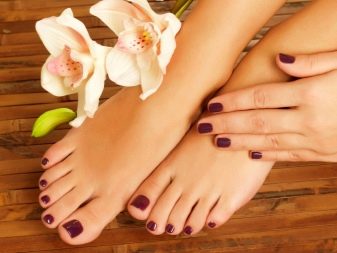
See why onycholysis occurs in women and how to treat it.
